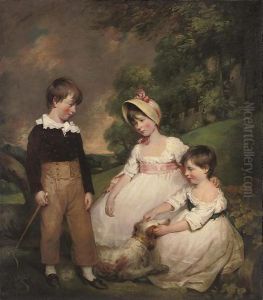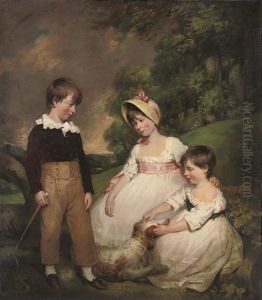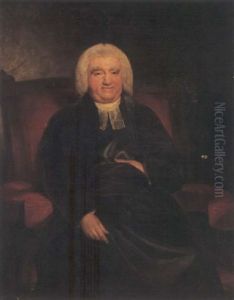John James Halls Paintings
John James Halls was an English painter, born in 1776 in Colchester, Essex. He is known for his contributions to portraiture and history painting. During his lifetime, he built a modest reputation as an artist, but he never achieved the fame of some of his contemporaries. Despite this, his work provides a valuable insight into the art scene of England during the late 18th and early 19th centuries.
Halls began his artistic education in the Royal Academy Schools in London, where he studied under the tutelage of renowned artists of the time. His early career was marked by his dedication to mastering his craft and his participation in exhibitions at the Royal Academy. Despite showing promise, Halls struggled to secure a stable position in the competitive art world of his time.
His style was influenced by the prevailing neoclassical trend, which emphasized idealized forms and drew inspiration from the art and culture of ancient Greece and Rome. However, Halls was also known for incorporating a sense of realism and psychological depth into his portraits, which distinguished his work from that of some of his contemporaries.
Throughout his career, Halls took on various commissions and produced a number of notable works. Some of his paintings reflected the social and political issues of the day, and he occasionally ventured into the realm of literary subjects, drawing on the works of Shakespeare and other writers for inspiration.
Despite his talents, Halls did not achieve the level of success enjoyed by some of his peers. His work was, at times, overlooked in favor of more fashionable artists, and as a result, he did not receive the same level of patronage. Nevertheless, he continued to work until his later years, contributing to the cultural landscape of his time.
John James Halls died in 1853, leaving behind a body of work that, while not as widely recognized as that of some of his contemporaries, offers a compelling glimpse of the artistic endeavors of the period. Today, his paintings can be found in various art collections, and they continue to be studied for their historical and artistic value.







